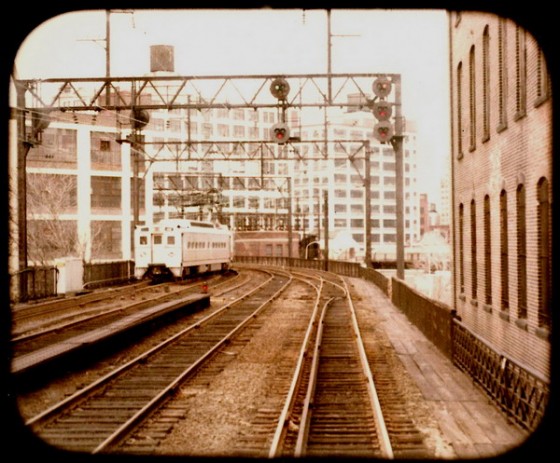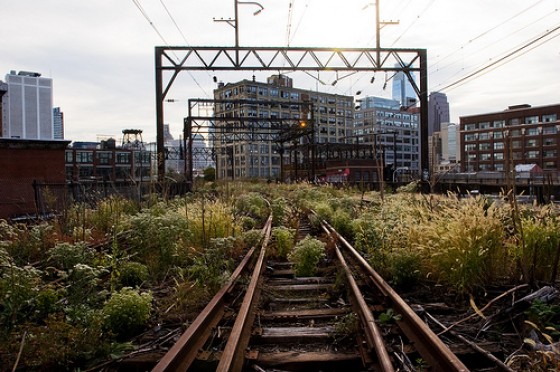The Reading Viaduct is one of Philadelphia’s unlikely treasures, which goes unseen and unnoticed by most who live in town. For those who are uncertain what the viaduct is, it’s an elevated train track that carried trains into and out of Center City’s Reading Terminal Station for almost 100 years. It’s been out of commission since it was discontinued in 1984, when the Center City commuter tunnel was opened and the Terminal was closed to trains. The viaduct was built back in the 1890s and runs from Vine St. to Fairmount St., though it originally went all the way to Arch St. While the remaining viaduct has now become quite overgrown with grass and unruly trees, there is a ton of potential for development as it does provide pretty awesome views of the city and surrounding neighborhoods.
The former four-track piece of history, if developed correctly, has the potential to be one of the coolest parks in the city and most definitely the coolest in the Callowhill area. While the City has not yet taken concrete steps to take on this project, The Reading Viaduct Project (RVP) was started in 2003 to try and garner support and planning for the idea. Located in the heart of what used to be one of the most industrial parts of the city in the 19th and early 20th centuries, there is so much potential for this space to contribute to even more progress in an area of Philadelphia that has been pursued with growing interest by both residential and commercial suitors because of its post-industrial charm.
If you were to go up to the Reading Viaduct today, it’s likely that you would run into a few vagrants that have found their own “apartment with a view” as well as a few photography students taking advantage of the scenery. But how cool would it be for the city to create a public park out of this diamond in the rough so that we don’t have to scale the trestle to get up there? Really cool, since there is now barbed-wire blocking all potential entrances. Besides our own selfish reasons for wanting it developed, we suspect it would also act as an economic catalyst for neighborhoods that surround it. According to the RVP, similar projects in other cities have been hugely successful, such as the New York City Chelsea High Line; redevelopment of the High Line has generated public interest and proposals of 10 high-rise buildings along the former track. While we don’t necessarily know that we want high-rises over there, we would love a space to bring together the community as well as bring some green life into the area. In 2003, the City of Philadelphia obtained a grant which allowed Urban Engineers to run a study on possible alternatives for the viaduct. These studies concluded that it would cost approximately $40 million to demolish the Reading Viaduct, whereas it would cost $5.1 million in comparison to merely develop it. To us, that sounds like all the evidence the we need. Let’s do it.
–Kaitlin Bostwick


